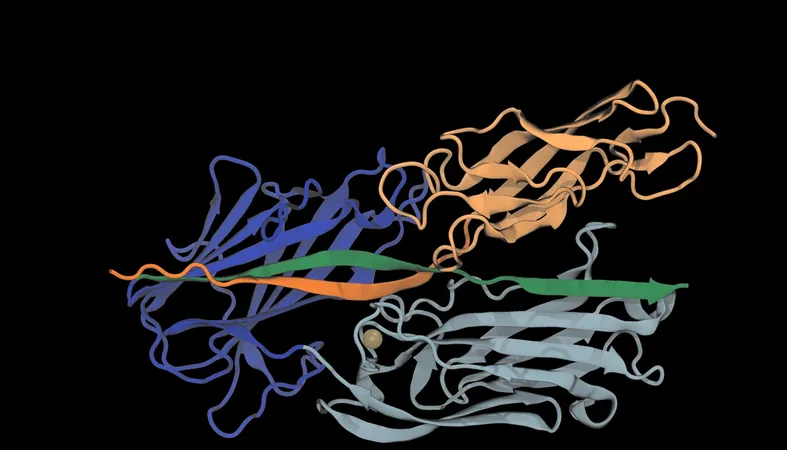
Unveiling the Sticky Secrets of Staphylococcus Aureus: A Game Changer in Infection Treatment!
2025-09-10
Author: Wei Ling
Your skin faces a relentless barrage of scratches and scrapes, yet the tenacious bacterium Staphylococcus aureus manages to cling on. While often harmless, this pesky germ can transform into a serious threat, leading to infections and worsening conditions like atopic dermatitis. However, scientists have finally cracked the code behind staph's stickiness—revealing groundbreaking insights that could revolutionize treatment options!
The Sticky Bond: How Staphylococcus Aureus Clings On!
An international team of researchers has meticulously uncovered the intricate interactions between proteins that form a remarkably strong bond, providing a clearer picture of how S. aureus attaches to damaged skin. "We modeled the whole system," says Priscila Gomes, a postdoc at Auburn University, one of the key researchers. "Now we know precisely how this interaction unfolds."
Previously, it was known that S. aureus utilizes a protein named SdrD to adhere to desmoglein-1, a protein that helps skin cells stick together. However, the detailed mechanism remained elusive—until now!
The Astonishing Force Behind Staph's Grip!
Employing advanced techniques like atomic force microscopy (AFM), the team quantified that a staggering 2 nanonewtons of force is necessary to separate a needle coated in desmoglein-1 from S. aureus expressing SdrD. This astonishing figure marks the strongest noncovalent molecular interaction recorded, outpacing the typical weak protein bonds that usually snap under a mere few piconewtons.
Decoding the Mechanism: A Fortified Connection!
The research revealed that SdrD's A domain binds to desmoglein-1 through a series of hydrogen bonds and aromatic interactions, constructing an unbreakable hold. Furthermore, the protein's B domain acts as a shock absorber, unfurling under pressure. To top it off, calcium ions stabilize these interactions, enhancing their resiliency—the more you attempt to pull them apart, the stronger they cling!
A Revolutionary Implication for Atopic Dermatitis!
Interestingly, calcium is naturally involved in the wound-healing process and becomes abundant when damage occurs. This discovery suggests that S. aureus's increased adhesion in atopic dermatitis-affected cells is due to their higher calcium levels—highlighting a crucial link between this skin condition and the stubborn bacteria.
Towards Innovative Treatments: Prevention Over Elimination!
With these groundbreaking findings, Rafael C. Bernardi, the lead researcher, believes that targeting the specific attachment sites of S. aureus could lead to novel treatments that prevent bacterial colonization, steering clear of antibiotic resistance issues. Additionally, the insights gained could pave the way for single-molecule attachments in various applications, including materials and hydrogels. The future looks promising!





 Brasil (PT)
Brasil (PT)
 Canada (EN)
Canada (EN)
 Chile (ES)
Chile (ES)
 Česko (CS)
Česko (CS)
 대한민국 (KO)
대한민국 (KO)
 España (ES)
España (ES)
 France (FR)
France (FR)
 Hong Kong (EN)
Hong Kong (EN)
 Italia (IT)
Italia (IT)
 日本 (JA)
日本 (JA)
 Magyarország (HU)
Magyarország (HU)
 Norge (NO)
Norge (NO)
 Polska (PL)
Polska (PL)
 Schweiz (DE)
Schweiz (DE)
 Singapore (EN)
Singapore (EN)
 Sverige (SV)
Sverige (SV)
 Suomi (FI)
Suomi (FI)
 Türkiye (TR)
Türkiye (TR)
 الإمارات العربية المتحدة (AR)
الإمارات العربية المتحدة (AR)